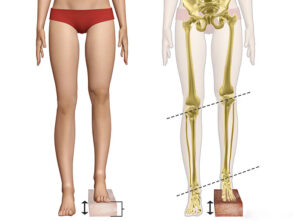Chiropractic Care: What It Is and What It Should Be
Chiropractic care is a healthcare profession that focuses on diagnosing, treating, and preventing mechanical disorders of the musculoskeletal system, particularly the spine. However, modern chiropractic care has evolved to be more than just spinal manipulation. At its best, chiropractic care is evidence-based, patient-centered, and holistic, helping individuals improve their overall function and well-being without unnecessary interventions.

The Foundation of Evidence-Based Chiropractic Care
Evidence-based chiropractic care prioritizes:
– Thorough Assessments: Before any treatment begins, a chiropractor should conduct a comprehensive assessment to understand your condition fully. This includes taking your medical history, performing physical examinations, and, if necessary, referring you for further imaging or specialist opinions.
– Individualized Treatment Plans: No two people are the same, and neither are their treatment needs. Beware of cookie-cutter plans or practitioners who promise that a condition will take an exact number of sessions to “fix.”
– Transparency and Communication: Your chiropractor should explain the diagnosis, the mechanism of injury, the treatment plan, and what you can do to support your recovery.
– Knowing When to Refer: If your condition falls outside the chiropractor’s expertise or scope, they should refer you to the appropriate healthcare professional.

Leg Length Discrepancy (LLD): What You Need to Know
One common concern people bring to chiropractors is leg length discrepancy (LLD). LLD can be classified into two categories:
1. Anatomical LLD: One leg is physically longer than the other due to bone structure differences.
2. Functional LLD: Apparent differences in leg length caused by muscle imbalances, pelvic alignment, or posture.
Here’s the reality: small differences in leg length are normal and often have no clinical significance. Many people have a slight LLD without any symptoms or functional issues. Functional LLD can often be addressed with specific exercises, manual therapy, or changes in movement patterns. Beware of practitioners claiming they need to “correct” your leg length through endless adjustments.
Avoid the Trap of Endless Packages
Some chiropractors market their services by selling large packages of sessions, often based on the promise of “correcting” perceived issues. This approach is problematic because:
– Healing and progress vary greatly among individuals.
– It’s impossible to predict the exact number of sessions a person will need at the start of treatment.
– Chiropractic care should focus on assessments and measurable results, not a pre-set number of visits.
Trust a chiropractor who adjusts their treatment plan based on your progress and needs, rather than trying to lock you into a one-size-fits-all package.
The Posture Myth: Good vs. Bad Posture
The idea of “good” and “bad” posture is outdated. Research shows that sustained posture—holding the same position for extended periods—is more of a problem than the posture itself. For example, sitting isn’t inherently harmful, but sitting for hours without movement can strain your body.
The Key to Healthy Movement:
– Change positions frequently.
– Incorporate regular breaks to stand, stretch, or walk.
– If you sit in a flexed position all day, counteract it with activities that extend your spine and engage different muscle groups.
Movement is essential for keeping your body functional and pain-free. Sitting isn’t the villain; inactivity is.
Chiropractic Care Should Empower You
The goal of chiropractic care is to help you recover and improve your quality of life. A good chiropractor will:
– Provide evidence-based interventions.
– Educate you about your condition and what you can do to manage or prevent it.
– Encourage you to take an active role in your health through exercise, movement, and lifestyle adjustments.
Final Thoughts
Chiropractic care can be a powerful tool for managing pain and improving function, but it should be grounded in evidence and tailored to each individual. Avoid practitioners who:
– Sell fear-based care or large, pre-paid packages.
– Claim they can “fix” everything with adjustments alone.
– Make promises without thorough assessments.
Instead, look for a chiropractor who values assessments, results, and patient empowerment. Remember, your health journey is unique—and so should be your care.